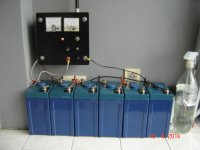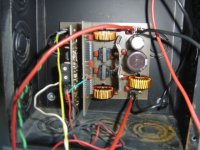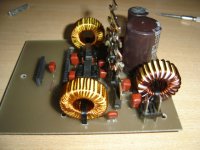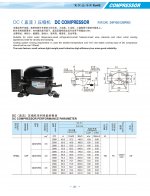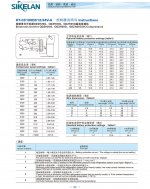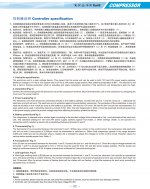My current electrical energy rate is USD $0.0689 per kWH. Total comes to about 15c/kWH with transmission costs and such. Columbus, Ohio
Man that's unreal!$0.41 per KWH
This started as a game, but with the daily power failures (Up to 3 at a day of few minutes, to up to 5 days without power)
We have had power outages here, usually a few hours due to seriously old infrastructure even though the power generation plant is only 3 miles away as the power lines go, several miles by car. One outage last winter was 13 hours long on a day when the outside temperature hit +1 degree F (-17C). It got down to 43 F (6C) inside the house.
That pales compared to the 22 days without power when Hurricane Wilma hit south Florida in October 2005. All of the power infrastructure was wiped out. It was an eerie feeling standing on the roof at night and not seeing ANY light in any direction except for stars. The day after the storm passed through it was the clearest night I have ever seen.
No Fusion for you
Somebody mentioned Fusion as a power source.
I don't think this exists except as a Laboratory curiosity.
We will probably have to wait many more Decades.
Somebody mentioned Fusion as a power source.
I don't think this exists except as a Laboratory curiosity.
We will probably have to wait many more Decades.
Brisbane price
My last bill was AU$ 562.20 for 92 days including costs for 1833 kW/h
That's AU$ 0.31 per kW/h US$ 0.23
In summer we use about 2700 kW/h in 90 days
Cheers ,
Rens
My last bill was AU$ 562.20 for 92 days including costs for 1833 kW/h
That's AU$ 0.31 per kW/h US$ 0.23
In summer we use about 2700 kW/h in 90 days
Cheers ,
Rens
In Sydney 0.16 US / KWh I also pay 0.52 US per day for supply charge.
I currently get 0.44 US / KWh for solar energy I put back into the grid, but that will probably drop to around 0.07 US from 1st Jan when the bonus scheme (was an incentive to install solar systems) runs out.
Tony.
I currently get 0.44 US / KWh for solar energy I put back into the grid, but that will probably drop to around 0.07 US from 1st Jan when the bonus scheme (was an incentive to install solar systems) runs out.
Tony.
Many thanks again.
It would be interesting to know if you can generate your own energy, and the excess, to be returned to the electricity company.
Here, in Argentina it has not legislated, but I generate more than the 50% of the energy I use. This includes light and the refrigerator, and ham radio sets. This started as a game, but with the daily power failures (Up to 3 at a day of few minutes, to up to 5 days without power) now it is a must.
Please calculate the wire thickness you need with the Ampères the batteries can deliver. As interconnects are thicker I am practically sure your wires are too thin (colorcode is off too). Batteries should not be stored on the floor but in a battery rack in a ventilated room and connections should be isolated. The connections on the box and the crimped connectors on the cables are also not suited for the current when looking at the battery terminals. I work a lot with batteries and it is better to be safe than sorry.
Questions: do you have a solar voltage regulator connected to the panels ? Do you use inverters ?
* kWh price here in Germany where I live is 24.4 p/kWh.
Attachments
Last edited:
2 rates here, 'cheap' rate for heating/hot water is roughly the same as quoted for USA/Canada. Dear rate for everything else is about double. Some goes to pay for development of alternatives, nuclear plants need huge subsidy etc etc.
And my current gig 🙂
Please calculate the wire thickness you need with the Ampères the batteries can deliver. As interconnects are thicker I am practically sure your wires are too thin (colorcode is off too). Batteries should not be stored on the floor but in a battery rack in a ventilated room and connections should be isolated. The connections on the box and the crimped connectors on the cables are also not suited for the current when looking at the battery terminals. I work a lot with batteries and it is better to be safe than sorry.
OK, thanks for your interest. interconnecting cables are about 6mm² and the maximum current drain is about 5 amperes, so they are strongly overdimensioned. I did't know that there was a color code for interconnecting the cells, and as I live alone, no one at home, this becomes irrelevant.
Questions: do you have a solar voltage regulator connected to the panels ? Do you use inverters ?
* kWh price here in Germany where I live is 24.4 p/kWh.
The regulator is the black box containing electronics inside and the ammeter and voltmeter upper next to the batteries. I designed it of my own. It is two SMPS buck regulators operating 180 deg out of phase between them, and with current sharing. Voltage floats about 14V and is adjustable with the multi-turn potentiometer at the front.
The batteries aren't in the floor. I made a table fixed at the walls, with concrete and coated with ceramic tiles.
No inverters, appliances are powered directly from 12V: refrigerator, ligthning, ham radio and the phone converter.
Attachments
George -- you don't have a gennie?
Yes, I brought the two I used in Florida during the 22 day hurricane Wilma outage. The big problem then was getting gasoline. One of our neighbors drove his pickup truck about 100 miles north to get fuel for several families every few days.
I have not yet had the time to install wiring or a transfer switch to use the generator effectively. I still have to rely on extension cords. Both generators are budget pull start models. The small one developed a fuel leak, the plastic lines crumbled. The big one works, and was used for a few hours on the cold day without power to operate a couple space heaters. It is so loud that we had to shut it off several times.
Long term I plan to come up with a better alternative, but it isn't in the budget in the near future. Next year's monthly health care premium is equal to my pension check. There will be zero unnecessary expenditures for a while unless I can find a job that offers subsidized health care.
OK, thanks for your interest. interconnecting cables are about 6mm² and the maximum current drain is about 5 amperes, so they are strongly overdimensioned. I did't know that there was a color code for interconnecting the cells, and as I live alone, no one at home, this becomes irrelevant.
The regulator is the black box containing electronics inside and the ammeter and voltmeter upper next to the batteries. I designed it of my own. It is two SMPS buck regulators operating 180 deg out of phase between them, and with current sharing. Voltage floats about 14V and is adjustable with the multi-turn potentiometer at the front.
The batteries aren't in the floor. I made a table fixed at the walls, with concrete and coated with ceramic tiles.
No inverters, appliances are powered directly from 12V: refrigerator, ligthning, ham radio and the phone converter.
Nice. Still we design here for the current the batteries are rated certainly when load is monitored manually. A fuse box is connected very close to the batteries also to separate batteries for maintenance or in case of battery failure. After internally shorted batteries one learns a thing or two but we work with redundant 300 kW 400V strings where things are a bit more dangerous. One hand in the pocket and a healthy dose of respect for the power they can develop 😉
Last edited:
OK. I saw some 300V battery string in switching UPS's, Emmerson, Liebert or similar trades.
There are two protection mechanism. One is included in the cable going from the charger to the battery pack, not seen in the above photos. Under the table, there are 3 thermal cutouts, one 10A. for the fridge (4Amp nominal current), one of 40A for ham rigs and 16A for lights. The charger fuse only protects for a short in the wiring, because solar cells are intrinsecally current limited at about 12A at full sun light, and is light depending. You can short the cells directly whithout any further damage than the cable warm.
Returning to the main line of this thread, here we have 2 different cost in the bill. A fixed cost of about AR$ 4.44 per day (.3 aprox. U$s). A second variable cost of .082AR$ per KWh (.0055U$S) at the today's currency.
Included in the bill, there are lots of taxes, municipal, provincial and national ones. Some of them, were "temporary for ever". Then, a power wasted of about 92KWh in a month (AR$ 6 apx or U$S 6), which sums up about 203AR$ (13.53 U$S). More than twice.
BTW, did you work in solar station? Also, what does "moderator emeritus" mean?
Many thanks in advance.
Best regards.
There are two protection mechanism. One is included in the cable going from the charger to the battery pack, not seen in the above photos. Under the table, there are 3 thermal cutouts, one 10A. for the fridge (4Amp nominal current), one of 40A for ham rigs and 16A for lights. The charger fuse only protects for a short in the wiring, because solar cells are intrinsecally current limited at about 12A at full sun light, and is light depending. You can short the cells directly whithout any further damage than the cable warm.
Returning to the main line of this thread, here we have 2 different cost in the bill. A fixed cost of about AR$ 4.44 per day (.3 aprox. U$s). A second variable cost of .082AR$ per KWh (.0055U$S) at the today's currency.
Included in the bill, there are lots of taxes, municipal, provincial and national ones. Some of them, were "temporary for ever". Then, a power wasted of about 92KWh in a month (AR$ 6 apx or U$S 6), which sums up about 203AR$ (13.53 U$S). More than twice.
BTW, did you work in solar station? Also, what does "moderator emeritus" mean?
Many thanks in advance.
Best regards.
We're severely off topic but no I worked with large industrial UPSes, generators etc. Moderator Emeritus says "retired moderator". I haven't chosen that term myself AFAIK, just got it when I was no moderator anymore.
Nice DC compressor, I bought a new A+++ (EU classification for lowest energy use) fridge this week. R600, so n-butane (!), refrigerant and a rpm controlled compressor. 159 kWh/annum....
Yeah we also know "temporary for ever taxes" here too.
Back to the subject !
Nice DC compressor, I bought a new A+++ (EU classification for lowest energy use) fridge this week. R600, so n-butane (!), refrigerant and a rpm controlled compressor. 159 kWh/annum....
Yeah we also know "temporary for ever taxes" here too.
Back to the subject !
Last edited:
Here just south of Boston we pay 9.9 cents/kWh plus a $5.50/mo customer fee to National Grid. (I find some irony in that fact lol) Our power is a mix of nuclear (Pilgrim plant in Plymouth soon to be phased out), gas, wind, hydro and other renewables like trash to energy.. In the near future Hydro Quebec will provide a fairly large % of the power available in New England.
Power is pretty reliable with outages lasting one or two seconds during storms, and other incidents until the breakers on the affected line clear. In 13 yrs we've had one outage during an ice storm that lasted 25hrs, of course in the extreme cold of winter. We were just able to keep the house above freezing by running the boiler periodically on a couple of 600VA UPS units. I keep telling myself I am going to design a 24V inverter to do the job. (Just need power for damper motor, ignitor, and gas valves)
Power is pretty reliable with outages lasting one or two seconds during storms, and other incidents until the breakers on the affected line clear. In 13 yrs we've had one outage during an ice storm that lasted 25hrs, of course in the extreme cold of winter. We were just able to keep the house above freezing by running the boiler periodically on a couple of 600VA UPS units. I keep telling myself I am going to design a 24V inverter to do the job. (Just need power for damper motor, ignitor, and gas valves)
R600, so n-butane (!), refrigerant and a rpm
Glad someone has seen sense on refrigerant at last. Propane is rather good as well and if you look at the amounts needed it won't make an explosive mixture even if it all leaks out.
Energy is an item everybody needs so many tricks are used here. Thanks to the wonderful EU energy companies were sold by municipalities to foreign private companies. Making money is what counts and costly maintenance is left for the time the companies are sold again 😉 Best is to invest in low power equipment like LED lighting, A+++ household appliances, solar panels and such. Latest news is natural gas will be phased out (while we are sitting on one of the largest gas fields...) and in the future only electricity will be used. I can not understand as having natural gas makes for clean energy and nearly every house has a gas connection. Independence from oil producing countries seems a nice added bonus.
R600 is the refrigerant of choice in A+++ fridges. I must say that the devices make peculiar sounds compared to traditional devices.
Glad someone has seen sense on refrigerant at last. Propane is rather good as well and if you look at the amounts needed it won't make an explosive mixture even if it all leaks out.
R600 is the refrigerant of choice in A+++ fridges. I must say that the devices make peculiar sounds compared to traditional devices.
Last edited:
I'm assuming the thought behind phasing out natural gas domestically is that there are so many leaks in distribution; methane is a particularly effective green house gas. I am not sure what the plans are for phasing out R-134A, but there has been discussion of iso-butanes as a refrigerant here too.
Here in MA (and probably at the federal level too?) wrt gas leaks there is legislation in the works to redefine the largest acceptable volume of leaking gas from a given leak before the gas company has to fix it. (Many leaks surprisingly are not fixed.)
Here in MA (and probably at the federal level too?) wrt gas leaks there is legislation in the works to redefine the largest acceptable volume of leaking gas from a given leak before the gas company has to fix it. (Many leaks surprisingly are not fixed.)
- Status
- Not open for further replies.
- Home
- Member Areas
- The Lounge
- KWh vs $
